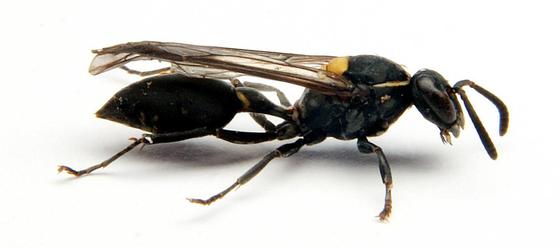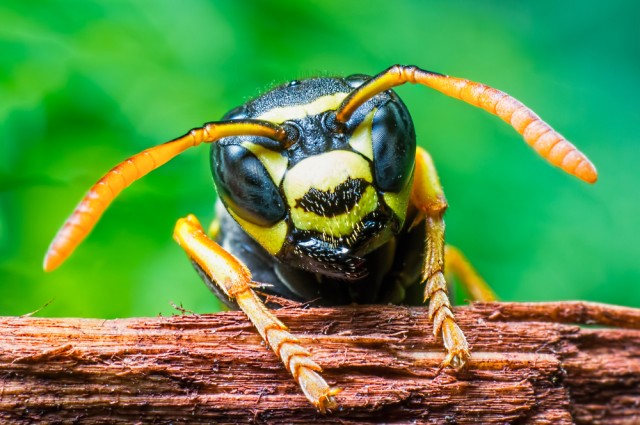Brazilian Wasp Venom Kills Cancer Cells but Not Healthy Cells
HEALTH, 7 Sep 2015
Caroline Reid – TRANSCEND Media Service
2 Sep 2015 – Wasps get their fair share of bad press. They have painful stingers, and they’re not as useful (or cute) to us as bees. However, their time to step in the spotlight may be just around the corner: Their venom has been shown to attack cancer cells while leaving healthy cells alone.
The cancer-targeting toxin in the wasp is called MP1 (Polybia-MP1) and until now, how it selectively eliminates cancer cells was unknown. According to new research, it exploits the atypical arrangement of fats, or lipids, in cancer cell membranes. Their abnormal distribution creates weak points where the toxin can interact with the lipids, which ultimately pokes gaping holes in the membrane. These are sufficiently large for essential molecules to start leaking out, like proteins, which the cell cannot function without.
The wasp responsible for producing this toxin is the Polybia paulista. The toxin has so far been tested on model membranes and examined using a broad range of imaging techniques. You can see the team’s research results in the Biophysical Journal.

The wasp, Polybia paulista, which produces the venom containing MP1. Professor Mario Palma/Sao Paulo State University.
“Cancer therapies that attack the lipid composition of the cell membrane would be an entirely new class of anticancer drugs,” said Paul Beales from the University of Leeds and co-author of the study. “This could be useful in developing new combination therapies, where multiple drugs are used simultaneously to treat a cancer by attacking different parts of the cancer cells at the same time.”
In healthy cell membranes, the inner layer (facing the inside of the cell) is packed with phospholipids, including PS (phosphatidylserine) and PE (phosphatidylethanolamine). However, in cancer cells, PS and PE are located on the outer layer of the cell membrane, facing the opposite way.
To test the different effects of PS and PE’s presence on a cell, the scientists examined how the MP1 interacted with model membranes infused with PE and/or PS. The presence of each phospholipid had a destructive effect on the cells. PS increased the chance of MP1 binding to the membrane by a factor of seven to eight. The presence of PE inflated the size of the holes created by the MP1 by a factor 20 to 30.
“Formed in only seconds, these large pores are big enough to allow critical molecules such as RNA and proteins to easily escape cells,” said João Ruggiero Neto from São Paulo State University and co-author of the study. “The dramatic enhancement of the permeabilization induced by the peptide in the presence of PE and the dimensions of the pores in these membranes was surprising.”
The next stage for this research is to adjust the amino acid sequence of MP1 to see what gives it its selective properties, and to try and refine them. “Understanding the mechanism of action of this peptide will help in translational studies to further assess the potential for this peptide to be used in medicine,” Beales says. “As it has been shown to be selective to cancer cells and non-toxic to normal cells in the lab, this peptide has the potential to be safe, but further work would be required to prove that.”
Go to Original – iflscience.com
DISCLAIMER: The statements, views and opinions expressed in pieces republished here are solely those of the authors and do not necessarily represent those of TMS. In accordance with title 17 U.S.C. section 107, this material is distributed without profit to those who have expressed a prior interest in receiving the included information for research and educational purposes. TMS has no affiliation whatsoever with the originator of this article nor is TMS endorsed or sponsored by the originator. “GO TO ORIGINAL” links are provided as a convenience to our readers and allow for verification of authenticity. However, as originating pages are often updated by their originating host sites, the versions posted may not match the versions our readers view when clicking the “GO TO ORIGINAL” links. This site contains copyrighted material the use of which has not always been specifically authorized by the copyright owner. We are making such material available in our efforts to advance understanding of environmental, political, human rights, economic, democracy, scientific, and social justice issues, etc. We believe this constitutes a ‘fair use’ of any such copyrighted material as provided for in section 107 of the US Copyright Law. In accordance with Title 17 U.S.C. Section 107, the material on this site is distributed without profit to those who have expressed a prior interest in receiving the included information for research and educational purposes. For more information go to: http://www.law.cornell.edu/uscode/17/107.shtml. If you wish to use copyrighted material from this site for purposes of your own that go beyond ‘fair use’, you must obtain permission from the copyright owner.
